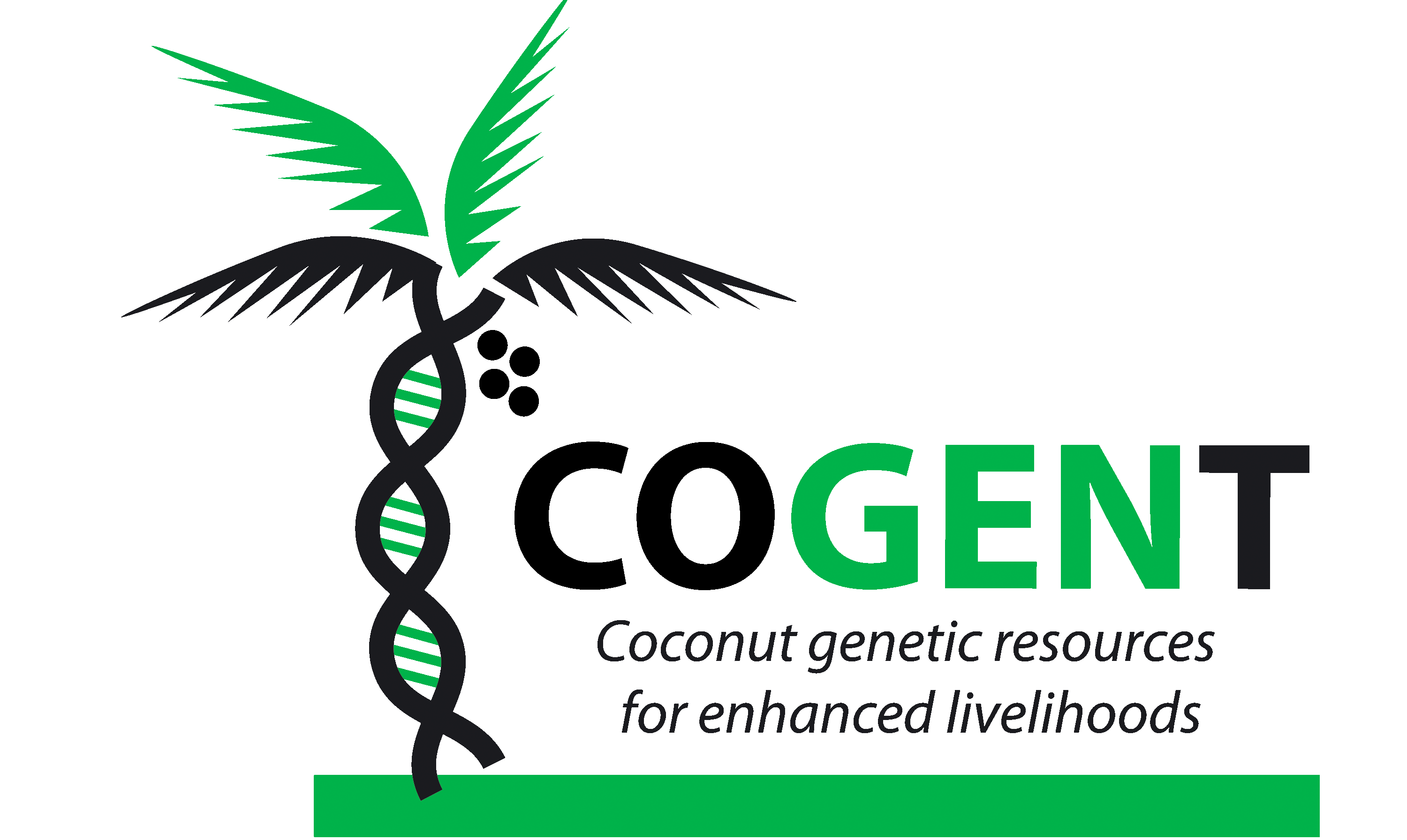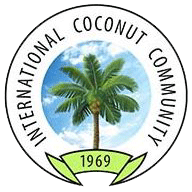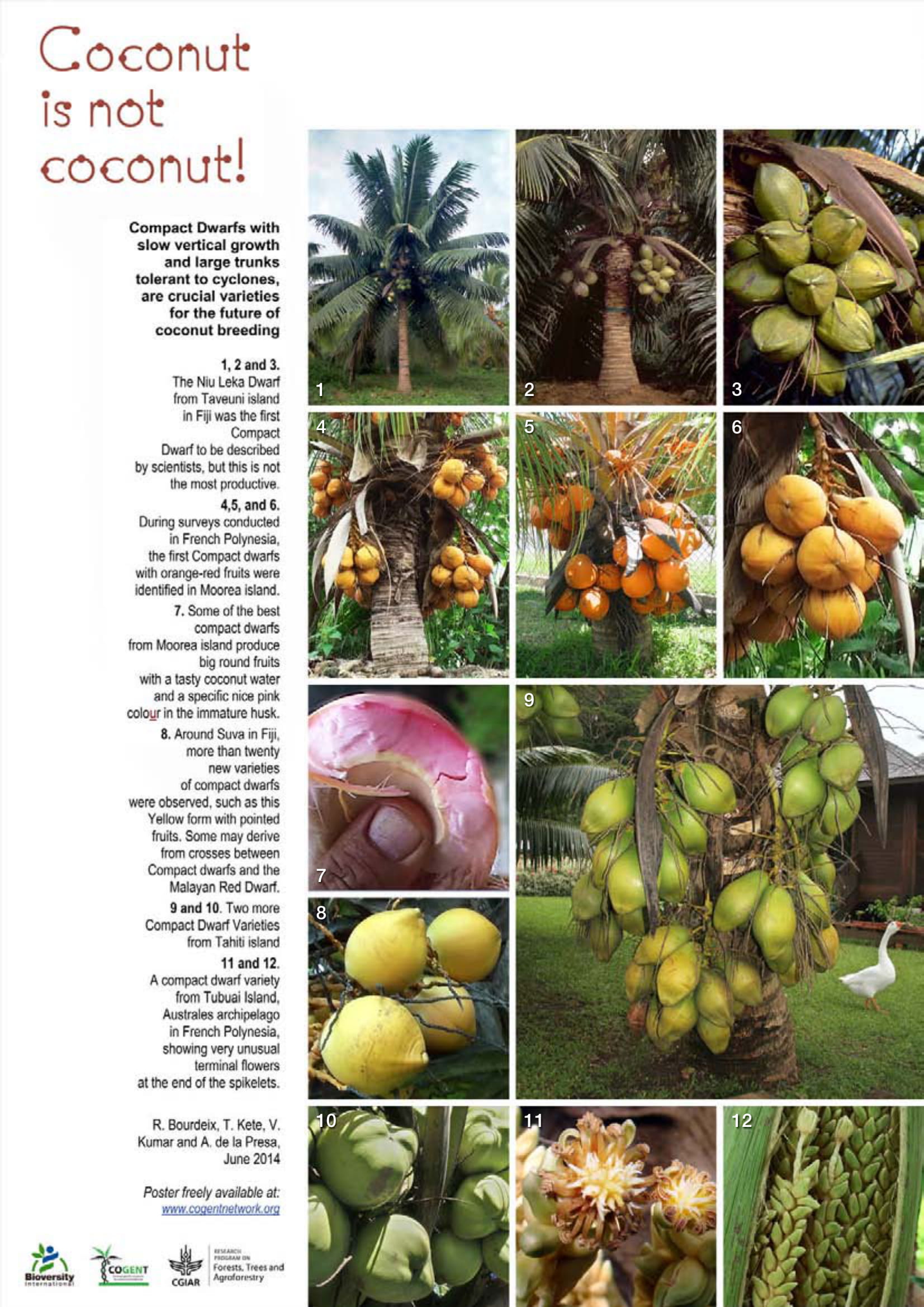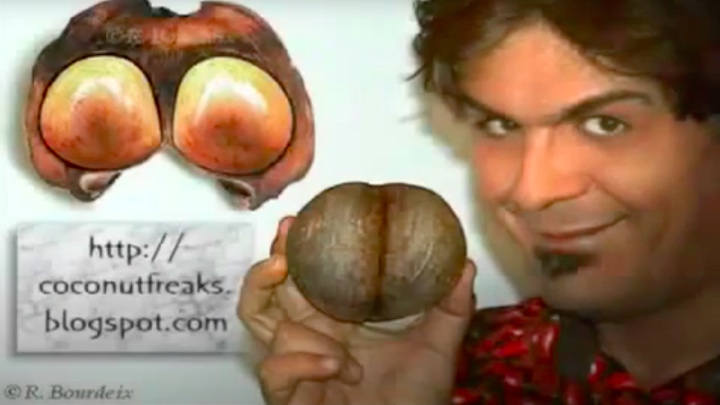Project titleValidation of a coconut embryo culture protocol for the international exchange of germplasm Project durationStart Date: 15 October 2009 | End Date: 15 April 2011 Funding agencyGlobal Crop Diversity Trust CountriesCote d'Ivoire, Papua New Guinea, Philippines, Sri Lanka Research Partners- Cocoa & Coconut Institute, PNG
- Coconut Research Institute (CRI),Sri Lanka
- Zamboanga Research Center (ZRC) of the Philippine Coconut Authority (PCA)
- Centre National de Recherche Agronomique (CNRA) - Cote d’Ivoire
Globally, coconuts support more than 10 million sustainable livelihoods, providing materials for food and shelter; helping stabilize farming-systems, and generating income and employment. Benefits from better access to improved planting materials and management, post-harvest technologies and new marketing opportunities are likely to accrue to the poorest of rural populations, providing project strategies are explicit in this regard. Coconut is often the most viable cash crop, especially in Asia-Pacific countries such as India and the Philippines, and partly owing to its non-perishability and product-diversity. Coconut systems also allow for other cash crops to be intercropped, generating additional income. Global demand for coconut oil, and copra/ coconut oil prices have recently increased although price volatility remains a constraint. Harnessing and conserving agro-biodiversity is critical to coconut production and its future. Bioversity International continues to support the development of a progressive global strategy for conserving coconut germplasm. It aims to cost-effectively optimize conservation of as much representative diversity as possible for the short, medium and long term. Because of its large, recalcitrant seeds that exhibit no dormancy, coconut diversity is conserved in field genebanks. Collections that represent coconut diversity are located in national and regional (5) genebanks, and in the multi-site International Coconut Genebank. The regional field genebanks are established, maintained and managed by national programmes with guidance from the International Coconut Genetic Resources Network (COGENT). This was founded by Bioversity International in 1992, as a global network of coconut producing countries, aimed at improving the production and use of coconut and the conservation of its diversity. Until recently, the only practical method for coconut ex situ conservation has been in such field genebanks, requiring a large area and substantial resources to maintain, and are subject to many risks. Many countries also lack the capacity and financial resources to maintain their collections. To ensure long-term conservation, accessions can now also be ‘cryo-preserved’, that is frozen to the temperature of liquid nitrogen (-196C). Cryopreservation arrests both the growth of plant cells and all processes of biological deterioration, so that the material can be preserved indefinitely and resuscitated into fully viable plants. The one-off cost of cryo-preserving accessions is expected to pay off against the recurrent costs of in vitro or in field maintenance over a number of years. Funded by the Global Crop Diversity Trust, the overall aim of this project is to optimize, validate and apply a standard embryo culture protocol for wide application under a variety of genotypes and conditions. The specific objectives are: - To test and optimize the embryo culture through the transfer of embryos from the ICG-AIO in Côte d’Ivoire to the Philippines, Papua New Guinea (PNG) and Sri Lanka.
- To assess the feasibility of shipping embryos as compared to hand-carrying embryos.
- To produce technical guidelines for the successful exchange of coconut germplasm as embryos.
- To duplicate 11 threatened accessions in the ICG-AIO in other genebanks using the validated protocol to transfer embryos.
An international inception workshop was held in Abidjan, Côte d’Ivoire, in which participants agreed on a flexible coconut embryo culture protocol. This helped ensure greater consistency and effectiveness of subsequent embryo culture work. Protocol validation and application work was completed by early 2012. The final project workshop, held in Lunuwila, Sri Lanka in February 2012, synthesised the findings of the grant work and furnished recommendations incorporated into a new edition of the protocol, entitled Technical guidelines for the safe movement and duplication of Coconut (Cocos nucifera L.) germplasm using embryo culture transfer protocols, available soon from Bioversity International. The project findings indicate that coconut embryo culture technology can provide an effective means for movement and exchange of coconut germplasm. However following embryo extraction, culture and transfer, the efficiency of the embryo culture protocol tested for germplasm exchange was generally low. High contamination and poor germination of the embryos contributed to the low efficiency. Contamination via culture medium has constrained recovery percentages of the coconut embryos. The success of the technology is dependent on the situation in the field, laboratory, screenhouse and the technical expertise in the originating and recipient laboratories. Moreover, the success is also dependent on the political situation in the countries involved in the exchange programme. Survival and establishment of embryos and embryo cultured seedlings have confirmed the effects of genotype, age of nut, disinfection and storage procedures, access to and level of technical expertise and effective laboratory, screenhouse and tissue culture facilities. The unstable political situation in Côte d’Ivoire has also greatly constrained the implementation of the project. Whilst the project has not succeeded in duplicating the 11 targeted unique accessions, at least partial duplication of some accessions has been achieved. Project work has substantially refined the previously existing embryo transfer protocol. However, to ensure the effective implementation of the protocol, both providers and recipients of the embryos should be equipped with the appropriate skills, and the required equipment should be available, in good working order which fully respects the revised protocol. The movement of embryo cultured seedlings should also be formally assessed to determine the feasibility of transporting seedlings instead of embryos especially to genebanks without tissue culture facilities. As a result of this work, as well as safeguarding the intrinsic biodiversity value of such germplasm conservation, we hope that ultimately those depending on coconut production are likely to enjoy greater food and livelihoods’ security. |  America/New_York
About UsNewsletterLogin
America/New_York
About UsNewsletterLogin
 United States
United States



